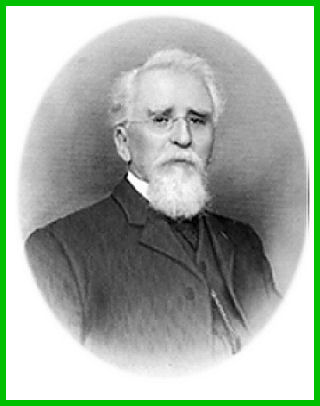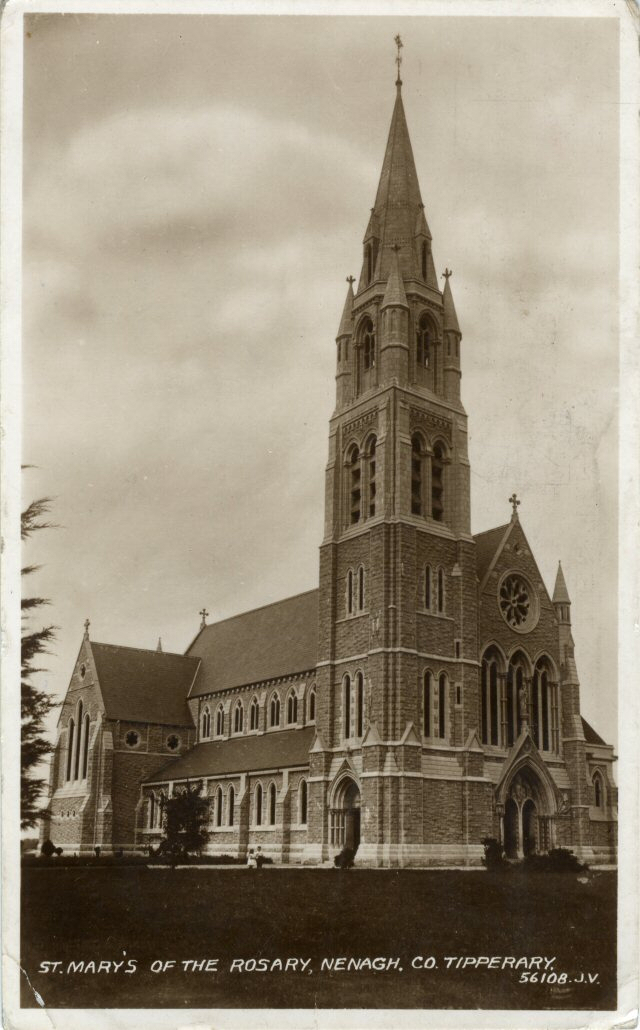

John was born in Nenagh, County Tipperary on 24th November 1835; the son of John and Hannah (née Hogan) Flannery. His father was a successful merchant in Nenagh, but the family were obliged to move from Nenagh to Silvermines in 1850 when the family business collapsed. John and his father emigrated to the U.S.A. in 1851, sailing from Liverpool on 8th September aboard the “Austria” and arriving at Charleston, South Carolina on 26th October.
John lived initially in Atlanta, Georgia, then moved to Charleston, South Carolina, working as a clerk until December 1854. His father embarked on the return passage to Ireland, but died on the voyage. John settled in Savannah, Georgia in 1855, and worked as clerk and book-keeper until the Civil War. In October 1857, John joined the Irish Jasper Greens, First Volunteer Regiment of Georgia, and served as a non-commissioned officer at Fort Pulaski in early 1861. He enlisted as a junior lieutenant on 30th May 1861, and was promoted to first lieutenant in January 1862 and captain on 20th October 1862.
During the Civil War, John served as quartermaster at Lee Battery on the Savannah River below Fort Jackson. His regiment was attached to General Joseph E. Johnston’s army. Early in 1863, he was placed in immediate charge of the battery. His active service was brought to an end by a serious illness in January 1865 at Corinth, Mississippi. He was paroled at Augusta, Georgia on 15th May 1865, and returned to Savannah.
In the summer of 1865, John launched his career as a merchant – initially in general shipping and as agent for the steamers “Dictator” and “City Point” running between Charleston and Palatka via Savannah, Fernandina and Jacksonville - forming a number of partnerships over the following decades until eventually, on 1st June 1901, the business became a corporation known as The John Flannery Company.
In November 1870, he was one of the founders of the Southern Bank and was elected a director. In January 1881, he succeeded Captain John McMahon as vice president, and was elected president on 9th February 1881 – a position he occupied for the next twenty-five years.
John became a member of the Cotton Exchange in 1876; served as a director for several years; was vice president for two terms, and president for one term. He was a member of the Building Committee under whose direction the Cotton Exchange, at the foot of Drayton Street, was erected. He was elected a member of the City Sinking Fund on its organisation in 1878, and served as its chairman from that time until 1888 when he declined further re-election, and retired from the commission.
He served several years as a director of the United Hydraulic Cotton Compress Company, the Tyler Cotton Compress Company; the Chattahoochee & Gulf Railroad Company (of which he was also vice president), the South Bound Railroad Company, the Georgia & Alabama Railroad Company; the Semmes Hardware Company, the Savannah Lighting Company; the Henderson-Hull Buggy Company; the Southern Pine Company; and the Savannah Hotel Company.
When the Irish Jasper Greens were re-organised in 1872, he accepted the captaincy, which he held continuously for twenty-six years until he reached the age of sixty-three. As chairman of the trustees selected by the bondholders who bought the Georgia Military Academy, on Abercorn Street, he rendered efficient aid to the First Volunteer Regiment of Georgia by enabling it to acquire this property for an armoury by inducing the owners to name a modest price and to grant the regiment liberal terms of payment.
He was a member of the Hibernian Society from 1866 to the time of his death, being elected vice president in March 1872, but declining re-election the following year because of his connection with the Irish Jasper Greens re-organised in the meantime. He was vice president for Georgia of the American-Irish Historical Society, and was president of the Jasper Monument Association, which erected the monument to the memory of Sergeant William Jasper in 1888.
He was devoted to the work of the United Confederate Veterans, of which he was an honoured member; but always refused to accept office, though the position of lieutenant-colonel of Georgia division was tendered him. He took a keen interest in the Georgia Historical Society; held membership of the Savannah Yacht Club, the Atlantic Club, and the Reform Club of New York City.
John was president of the Catholic Library Hall Association, which after the building of the new Cathedral in 1873, raised the funds, bought the old church, remodelled it, converted it into a library hall with its various accessories, and turned it over to the Catholic Library Association. He was a member of the building committee for the erection of the Cathedral of St. John the Baptist, which was erected in 1873, and burned in 1898. He became chairman of the building committee which erected the present Cathedral, which in 1899 and 1900 rose from the ashes of its predecessor.
In 1903, John donated a fund of $50,000 to be known as “The Flannery Fund”, to be managed by a board of trustees, the income of same to be applied in shares to various Catholic institutions in Georgia. He subsequently increased The Flannery Fund to $100,000 shortly before he died. John also gave generous donations for the construction of St. Mary of the Rosary Church in his native Nenagh, built in 1896 (pictured below).
John married Mary Ellen Norton on 30th April 1867, and the couple subsequently had six children – only two of which reached maturity: a son John McMahon Flannery (who died in December 1900), and a daughter Kate Flannery (who married Raphael T. Semmes). Mary Ellen Flannery died on 11th June 1899, and John died on 9th May 1910 in Savannah.

[his portrait is illustrated above, courtesy of Colleen Flannery; also St. Mary of the Rosary Church, Nenagh]